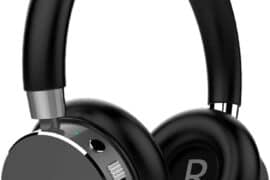Unraveling the Mystery of Kids Shoe Size Conversion: Australian to European
Hello, lovely parents! Navigating the world of children’s shoe sizes can often be a puzzling task, but don’t worry! Today, we’re here with an easy-to-follow guide to shed some light into kids shoe size conversion, particularly from Australian to European sizing.
Let’s dive right in and make shopping for your children’s footwear a breeze!
Why is Shoe Size Conversion Important?
Before we get into the nitty-gritty, let’s take a moment to discuss why accurate shoe size conversion is crucial for your child’s comfort and foot health.
Finding the Perfect Fit
Shoe sizes can vary significantly from country to country, like Australian and European sizes. Understanding shoe size conversion will help you find the perfect fit for your child, regardless of where the shoes are manufactured.
A Comprehensive Conversion Chart: Australian to European Kids Shoe Sizes
Got some fancy European made shoes for your kiddos, but befuddled by the sizing differences? Don’t worry! We’ve got your back. Next up, we dive into our handy comparison chart to translate Australian shoe sizes to their European equivalents and vice versa.
Deciphering the Numbers
First, let’s familiarize ourselves with some basic principles. Australian sizes follow UK sizing and count from a zero base. The European shoe sizing system (EU), on the other hand, uses a whole number system that begins with the dimensions of ten centimeters and progresses from there.
Using these foundations, we’ve come up with a conversion chart that makes sense of these two completely different systems for you!
Please note that while this chart has been carefully crafted to be as accurate as possible, there can always be nuances and variations between different shoe brands and styles. Always try on shoes whenever possible to ensure the perfect fit for your child’s unique foot shape and size.
Stay tuned for our comprehensive chart in the next section of this guide. By the time we’re finished, you’ll be an expert at navigating the world of kids shoe size conversion from Australian to European sizes!

Australian and European Kids Shoe Size Conversion Chart
For your convenience, here’s a comparison table with common Australian kids shoe sizes and their European counterparts:
For Small Kids
– Australian Size 4: European Size 20
– Australian Size 5: European Size 21
– Australian Size 6: European Size 22.5
– Australian Size 7: European Size 24
For Bigger Kids
– Australian Size 8: European Size 25.5
– Australian Size 9: European Size 26.5
– Australian Size 10: European Size 28
– Australian Size 11: European Size 29
– Australian Size 12: European Size 30.5
Final Thoughts on Kids Shoe Size Conversion
Parents, you’ve done a terrific job of tackling the often perplexing world of kids shoe size conversion from Australian to European. Armed with this knowledge, you’re now ready to find the perfect pair of shoes for your child, no matter where they’re from.
Happy Shoe Shopping!
We hope this guide has been helpful in your shoe shopping adventures. Remember, the key to a successful shoe shopping trip is knowing your child’s accurate size and understanding how to convert that size across different shoe sizing systems. With this guide, you’re well on your way to becoming a children’s shoe size conversion pro.
Just like Cinderella, it’s all about finding that perfect fit!
And with this guide in your back pocket, you’re all set to find the “glass slipper” for your little one’s foot, whether you’re shopping down under or across the pond.
Remember: a comfortable shoe is a happy foot, and a happy foot makes for a happy child. So parents, the next time you see that perfect pair of stylish Euro shoes for your child, go ahead with confidence!
Happy shoe hunting, wonderful parents!
Understanding Kids Shoe Size Conversion: Australian to European
When it comes to selecting the perfect pair of shoes for your little one, size does matter. Ensuring the correct fit is crucial for their comfort, health, and overall growth. Below, we’ll delve into five essential things parents should consider while preparing for kids shoe size conversion from Australian to European.
1. Familiarize with The Difference
Make sure to know the core difference between Australian and European shoe sizes. Typically, Australian sizes are 2 sizes behind European sizes. For instance, an Australian size 4 would equate to a European size 6.
2. Use A Conversion Chart
An easy way to convert Australian kids shoe sizes to European is using a specific conversion chart. Such resources can be found on numerous shopping websites and shoe brand sites and enable you to cross-reference sizes easily.
3. Understand the Shoe Brands
More often, shoe sizes can vary based on the manufacturer or even the style of the shoe. It’s always beneficial to explore different brands, read reviews, and take note of any common sizing discrepancies.
4. Don’t Forget About Growth Spurts
Kids grow fast, and their feet are no exception. Always lean towards a larger size if you’re unsure or if they’re between sizes. It’s ideal for leaving some room for growth, but remember too much space can be as detrimental as too little.
5. Try Before You Buy
If possible, taking your child to a physical store for a professional fitting is the most accurate method to determine their shoe size. They can try on the shoes, walk around, and quickly voice any discomforts.
By understanding these things, parents can ensure a seamless shoe size conversion from Australian to European for their children’s comfort and fit.
For more great articles please see here. For more information see here
Disclaimer
The articles available via our website provide general information only and we strongly urge readers to exercise caution and conduct their own thorough research and fact-checking. The information presented should not be taken as absolute truth, and, to the maximum extent permitted by law, we will not be held liable for any inaccuracies or errors in the content. It is essential for individuals to independently verify and validate the information before making any decisions or taking any actions based on the articles.




